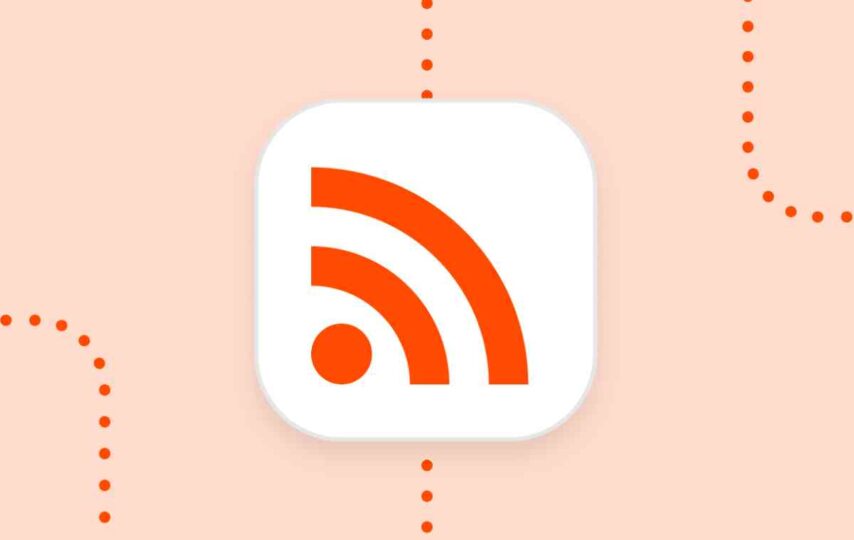RSS is not as cool as it once used to be, but I’m here to tell you you’re missing out.
My RSS feed reader has become my go-to application as soon as I wake up in the morning.
It’s the first thing I check with my coffee as it contains all the news, articles and updates relevant to my day. It’s also the last thing I quickly skim through before bed. And somehow I set aside only a few minutes without losing track of time, or binge scrolling…
Something I’m sure most of us are intimately familiar with. In the times of the attention economy, any reclamation of focus and time for oneself is a victory.
What is an RSS feed reader?
RSS feed readers have been around for more than twenty years and are a handy tool to have around whether you’re a student, an avid article reader or are in a line of work that requires a lot of reading. Readers pull the latest publications from many sources and display them in chronological order in a central feed. This makes skimming new headlines and reviewing material all the easier.
How is this done? RSS feed readers subscribe to websites via RSS feeds, which are XML files in the source code. Whenever a site publishes new content, it’s updated in the feed. The next time the reader crawls the RSS feed it sees the new post and syndicates it. And this process happens in short time intervals guaranteeing near instant synchronicity.
This is the basis for RSS, or Really Simple Syndication.
6 reasons why you should try it
Do not receive unnecessary emails
One surprising use for RSS has to do with your inbox. I don’t know about you, but I easily find my inbox overrun with newsletters, which I don’t really find the time to read at all. Even with helpful pruning and archiving and moving things around, it’s still unnecessary work. RSS is well equipped to handle newsletters, which has made my professional inbox neat and tidy.
Now, certain RSS readers will have built-in support for newsletters that make the transferal near automatic. However, in some cases you have to manually turn a newsletter feed into an RSS feed, which isn’t as complicated as you might think. There are free tools like Kill the Newsletter that get the job done.
Find everything you need at one place
People tend to romanticize creative chaos a little bit too much. I’ve never been more frustrated or distracted than when I had to go to a 100 places to follow news, reviews and think pieces. There’s a moment where the Internet becomes too big to just surf it. RSS saves so much time and effort in keeping up with all your regular online haunts.
You receive timely updates from every publication and source in a single dashboard, which makes the morning ritual of checking what’s new in the world a lot smoother and relaxing. There’s also the added bonus of syndicating content from a variety of platforms altogether. Video, audio and social media can easily be incorporated in the stream of news items and articles.
Readers also work towards making the subscription process as easy as possible whether through external tools for feed generation or through built-in tools like Inoreader’s browser extension that detects and subscribes users to feeds on any page you’re on.
Discover new and interesting content
Content discovery is a huge component of modern RSS feed readers. You’re not only dependent on external sources for new, relevant content, but have the feed reader itself as a resource. You’ll see most RSS feed readers have their own recommendation sections. Inoreader is a prime example with a discovery zone, which is well defined into many categories like technology and business.
What’s special is that sites being recommended figure in other users’ subscriptions, so they can be trusted. The topmost feeds are the ones with the highest subscription numbers and I find this a very useful criterion in regards to relevance. If so many people support a site, then the content must be at the very least interesting.
Do not waste your time searching for great content
Other than suggestions on whole feeds, RSS readers have internal search functions that make it a joy to search for specific articles whether in the reader’s database or user’s own subscriptions.
Another way I’ve found to always find the content I need is to filter out specific sites with a high daily output whether this is done through filtering out (in) specific topics or writers.
Use it for business purposes
RSS readers are surprisingly adept at supporting marketing and research projects on a company level. More and more feed readers are building on their features to give users greater control over what information they receive.
Because you can syndicate content across different platforms and feeds like Google Alerts, forum categories and searches, RSS feed readers allow you to perform industry research on trends, track campaign performance, perform social listening, do competitor research and monitor your brand.
RSS readers are also working on collaborative features like creating internal newsletters or shared feeds like Inoreader does with its Teams feature.
Get information from trusted sources
The war on misinformation rages on and there’s no sign that truth is going to win any time soon – we have seen this with the waves of Russian bots, the fake news sites and now with COVID-19 misinformation. It’s increasingly difficult to gage whether the article you randomly stumble upon tells actual facts or doctors the reality for some other purpose. Honestly, I don’t want to become an investigative journalist in my spare time.
RSS is a way out by giving users the power to screen content before it reaches their dashboard. Yes, you still have to select the sources, but that level of curation is done once. Afterwards, you can breathe easy knowing you get headlines you can trust.





